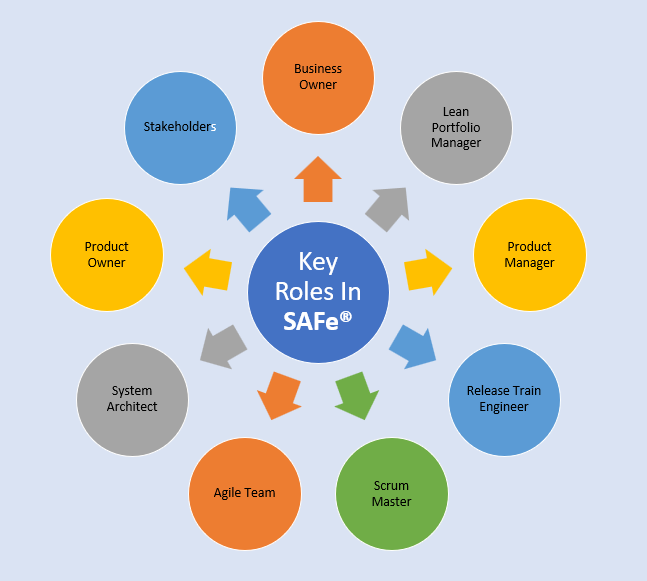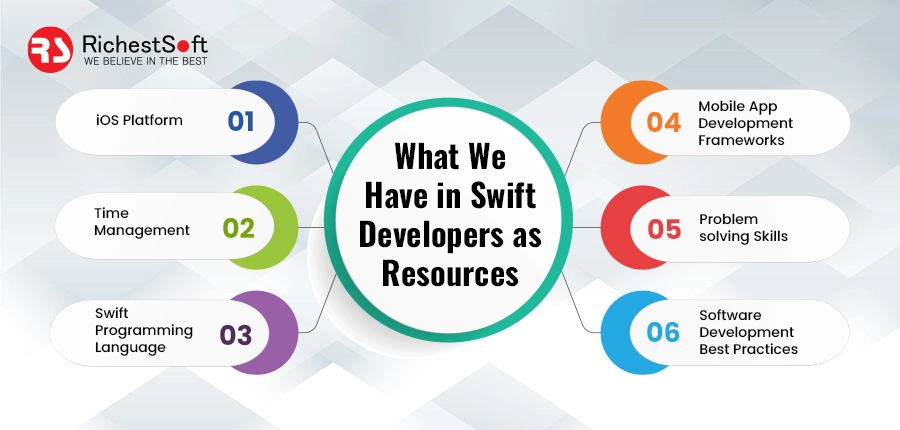The Scaled Agile Framework (SAFe) is a methodology that applies agile principles to large organizations and complex projects. Its purpose is to ensure the coordination and scaling of agile practices across multiple teams collaborating to create a product or solution.
In this comprehensive guide, we’ll unpack the fundamental ideas behind SAFe and explore how it enables enterprises to achieve business agility — i.e., the ability to promptly respond to market demands, frequently launch, swiftly react, and much more.
Table of contents
What is the Scaled Agile Framework (SAFe)?
The concept of SAFe was introduced in 2011 by software development methodologist Dean Leffingwell, who recognized the challenges, overhead, and complexity involved in implementing agile for large teams.
To meet the requirements of large enterprises, Leffingwell introduced the concept of scaled agile practices. This methodology provides a structured approach to planning, executing, and measuring the progress of large-scale agile initiatives.
The SAFe Framework provides various layers, roles, portfolios, value streams, programs, and practices tailored to each layer while maintaining alignment between goals and objectives.
SAFe endorses agile practices such as scrum, kanban, and extreme programming (XP), which help organizations achieve faster time-to-market, quality, continuous effective integration, deployment (CI/CD), customer satisfaction, and quick turnaround on market conditions.
What are the 3 levels of the Scaled Agile Framework (SAFe)?
SAFe is made up of three primary levels:
- Portfolio level — This level focuses on strategic alignment, portfolio backlogs, and achieving enterprise-level value stream to achieve business outcomes. It emphasizes lean costing and portfolio visions to meet common enterprisewide goals
- Program level — This level is responsible for executing agile release trains (ARTs). It involves planning, ART backlogs, continuous interaction, and delivery pipeline
- Team level — This level involves agile teams practicing scrum, kanban, and/or XP delivering the product in short iterations while maintaining high-quality standards
Benefits of SAFe
The benefits associated with the Scaled Agile Framework are numerous, and official data shows that SAFe creates value for more than 20,000 companies and 10,000 individuals worldwide:

Some of the most significant benefits include:
- Faster time to market — Working in cross-functional teams and collaborating effectively enables faster decision-making, rapid communication, and a customer-centric approach, reducing time and effort
- Improved quality — One of the key principles of SAFe is built-in quality, which means that every person involved in the framework takes responsibility for ensuring quality. This approach ultimately leads to improved metrics
- Increased productivity — The concept of a high-performing team in SAFe removes delays and keeps the team accountable for measurable goals
- Better employee engagement — The autonomy of agile teams and clarity at each level from processes such as ART, RTE, and PI helps boost motivation and employee satisfaction in day-to-day work
12 SAFe principles
To understand the SAFe framework properly, it’s essential to comprehend the value of each element. The framework facilitates the transfer of value throughout an organization’s hierarchy and functions.
Some crucial elements to focus on when practicing SAFe include:
- Lean agile principles — The SAFe framework espouses lean agile principles that guide organizational decision-making and behavior. These principles emphasize a customer-centric approach, applying systems thinking, assuming variability and preserving options, and delivering products incrementally with fast feedback
- SAFe core values — SAFe promotes four core values: alignment, built-in quality, transparency, and program execution. These values serve as foundations for individual and team behavior, cross-collaboration, and continuous improvement, leading to the delivery of best-of-breed products
- SAFe implementation roadmap — The implementation roadmap at the bottom of the framework outlines a high-level plan for transforming an enterprise to SAFe. It includes objectives, steps, actions, strategies, and other necessary measures like change management, implementation activities, and skill and talent transformation
- Agile team — At the center of the framework is the basic building block of a self-organizing, cross-functional agile team that ships value incrementally. The team comprises product owners, scrum masters, coaches, developers, testers, and other necessary roles and follows Agile methodologies such as Scrum, Kanban, and XP
- Agile release trains (ARTs) — Agile release trains are groups of multiple agile teams working together on the same solution or product. These teams are focused on common objectives and goals and release their work on a fixed schedule called a program increment (PI)
- Program increment (PI) planning — PI planning is essential for all teams to collaborate within ARTs and plan their work to be completed within eight to 12 weeks. This planning session involves defining objectives, setting priorities, and identifying risks and dependencies to ensure that upcoming and future increments align with general ART releases
- ART execution — Executing agile release trains involves refining the ART backlog, ensuring ART backlog readiness, and completing work within a specific timeframe. The process starts with PI planning and ends with an ART delivery assessment
- Agile product management — This aspect belongs to the middle layer of the SAFe framework. Product managers and owners work with stakeholders to establish the product vision, prioritize the backlog, and align it with business objectives and customer needs
- Continuous delivery pipeline — SAFe emphasizes a continuous delivery pipeline — an automated system for smooth value flow from ideation to deployment, including continuous integration, testing, deployment, and on-demand release practices
- DevOps and release on demand — An important aspect of SAFe is promoting a culture of DevOps and implementing practices that encourage collaboration. This helps ensure that releases are frequent, reliable, and of high quality
- Lean portfolio management — SAFe helps organizations synchronize strategy, investment, and execution at the portfolio level through lean portfolio management. This enables effective governance and oversight while prioritizing and financing initiatives strategically
- Continuous learning culture — SAFe emphasizes continuous learning through inspect and adapt workshops, which enable teams to reflect on their performance, gather feedback, create action plans, and make necessary improvements
Roles and responsibilities in SAFe
In SAFe, each individual has well-defined roles and responsibilities to facilitate the implementation and execution of processes within the framework:

Some primary key roles include:
- Lean portfolio manager — The individual in this role manages projects/products aligned with organization goals, makes investment and capacity decisions, resolves dependencies, and oversees overall portfolio execution using lean agile principles
- Release train engineer (RTE) — The RTE facilitates ARTs, remains responsible for delivering program increments (PI) as part of PI planning events, aligns with agile development teams, manages technical risk dependencies, and collaborates across ARTs
- Product manager (PM) — As a bridge between the business and development teams, product managers ensure that features prioritize customer needs and align with their expectations. They handle product backlogs and collaborate closely with RTE engineers
- Scrum master — The scrum master coaches agile teams within ARTs to ensure that agile principles and scrum ceremonies are followed to foster a culture of continuous improvement
- Agile team — The team comprises cross-functional members responsible for shipping value as working software and products. They are part of ARTs and typically hold roles like developers, testers, and POs who collaborate closely
- System architect — This individual provides technical leadership and guidance to ensure the overall system design, goals, and objectives. There are always multiple system architects within the ART who collaborate cross-functionally and address tech debts, challenges, and vision
- Product owner (PO) — In SAFe, POs work closely with product managers and the agile team to meet feature-level agreements and be responsible for prioritizing the team’s backlog. They also validate the value delivered through defined acceptance criteria
- Business owner — The people in these leadership roles are positioned above the product managers in the framework and define customer requirements in collaboration with internal and external stakeholders. Their main goal is to ensure that the organization’s objectives align with customers’ needs, which are then cascaded down to the ART through PMs
- Stakeholders — Stakeholders are vital in the SAFe agile framework, ensuring the success of agile initiatives and value delivery. Their active engagement involves providing valuable inputs and feedback, participating in PI planning, managing dependencies and risks, and validating work
The above roles can vary and be tailored according to an organization’s structure.
The product manager’s role in SAFe
Product managers play a crucial role within the SAFe framework. They are responsible for turning ideas into innovative solutions and collaborating effectively with various departments in the organization.
Collaboration is key, and experienced product managers working within a Scaled Agile Framework often find themselves working alongside RTEs, system architects, business owners, and customers to ensure smooth product development.
Furthermore, PMs act as a central source of information for product owners (POs) and agile teams building product features and improvements.
The SAFe framework defines the product manager’s responsibilities, which can be categorized into five main areas. These areas are equally valuable and consistent with other common methodologies and product management practices:
- Exploring the market and competitor landscape — Product managers stay informed about the market and competitor landscape by conducting market research, monitoring industry trends and competitors’ offerings, and identifying market opportunities
- Defining product vision and strategy — PMs create a compelling product vision that aligns with the company’s overall strategy. This vision acts as a beacon of guidance for the Agile teams during the product development process, offering direction and clarity
- Managing and prioritizing ART backlog — In the SAFe Framework, PMs ensure that the workflow is streamlined by focusing on the ART backlogs and defining hypotheses and acceptance criteria for these backlogs. Before each PI planning, the PM uses the Weighted Shortest Job First (WSJF) technique to reprioritize features judiciously. They also play a crucial role in ART events by collecting feedback, addressing product-related issues, and participating in solution demos
- Delivering value — PMs steer the team toward success by establishing clear product goals, identifying the target market, and devising a strategy
- Connecting with the customer — The SAFe framework enables PMs to collaborate with UX and business owners in conducting customer discovery. This involves utilizing various techniques such as surveys, direct interviews, usability testing, and observation to develop a product vision that prioritizes customer needs and a roadmap that addresses market needs and customer pain points

Real-world examples of SAFe success
Organizations across various industries have adopted the Scaled Agile Framework (SAFe) to boost collaboration, efficiency, and customer satisfaction. In this section, we’ll explore some real-world examples of SAFe success stories from diverse sectors such as IT services, software development, energy, national security, logistics, fintech, and music streaming:
NTT Data
NTT Data’s adoption of SAFe led to a significant enhancement in its software development process. By incorporating the Agile Release Train (ART) concept, NTT Data was able to synchronize multiple teams working on different aspects of projects. This improved alignment and collaboration resulted in a significant reduction in time-to-market for new products and features. The company also reported increased employee engagement and better overall product quality, contributing to higher customer satisfaction rates.
Nokia Software
The implementation of SAFe at Nokia Software allowed the company to address complex customer requirements more effectively by introducing a lean portfolio management approach. This enabled it to prioritize initiatives based on value delivery, reducing waste and improving resource allocation. As a result, Nokia Software saw an increase in project success rates and experienced a meaningful reduction in time-to-market for new products while maintaining high-quality standards.
Chevron
Chevron’s adoption of SAFe principles led to the establishment of cross-functional agile teams that focused on delivering value incrementally through iterative development cycles. This approach fostered greater transparency, faster decision-making processes, and more effective risk management strategies. Chevron managed to boost project completion rates as well as employee engagement and job satisfaction by embracing SAFe methodologies in its organization.
U.S. Air Force
By utilizing the Scaled Agile Framework, the United States Air Force revamped its software development practices for greater efficiency within its Kessel Run program, an initiative aimed at rapidly delivering combat capabilities through innovative software solutions.
The adoption of SAFe principles enabled faster deployment cycles (from years down to months), streamlined communication among stakeholders, and expedited project delivery timelines — all leading to improved mission readiness for national security purposes.
FedEx
Embracing SAFe allowed FedEx to optimize its operations while enhancing customer satisfaction across its global shipping network. By adopting the SAFe principle of “built-in quality,” FedEx improved its software development process, reducing defects and decreasing lead times for new features. The framework also fostered a culture of continuous improvement, enabling FedEx to adapt quickly to changing market conditions and maintain a competitive edge.
American Express
To remain competitive in the fast-paced fintech industry, American Express turned to SAFe for guidance on streamlining its business strategy with evolving customer needs. By implementing the agile release train concept and establishing cross-functional teams focused on delivering value incrementally, American Express was able to reduce time-to-market for new products while maintaining high quality standards. This increased product quality led to higher customer satisfaction rates.
Spotify
In the highly competitive music streaming industry, Spotify recognized the need for agility to stay ahead of the curve. Though its model for scaling agile differs somewhat from SAFe (and is no longer in use at the organization today), embracing SAFe principles enabled Spotify to foster a culture of continuous improvement through inspect-and-adapt feedback loops and iterative development cycles. As a result, the streaming giant was able to rapidly respond to changing market conditions and user preferences, leading not only to an increase in active users, but also contributing significantly toward maintaining a loyal user base.
SAFe certifications
Product managers looking to enhance their skills and demonstrate their expertise in implementing SAFe practices can pursue various certifications offered by Scaled Agile Inc. These certifications not only validate a PM’s knowledge of SAFe principles but also showcase their commitment to continuous learning and improvement.
Subscribe to our product management newsletter
Get articles like this to your inbox
SAFe® Product Manager/Product Owner (POPM) certification
The SAFe® Product Manager/Product Owner (POPM) certification is specifically designed for product managers, product owners, business analysts, and other professionals responsible for defining, prioritizing, and validating requirements within an organization. This certification focuses on the roles of both the product manager (responsible for strategic planning and decision-making) and the product owner (responsible for tactical execution).
By obtaining the POPM certification, individuals gain a comprehensive understanding of how to effectively apply lean agile principles in managing products throughout their lifecycle. They learn how to develop customer-centric solutions using design thinking techniques while working closely with cross-functional teams within an ART.
Additionally, they are equipped with tools to prioritize features based on value delivery and continuously improve processes through inspect-and-adapt feedback loops.
Other relevant SAFe certifications
While the POPM certification is the most directly applicable SAFe certification for product managers seeking expertise in SAFe implementation, there are other relevant programs that can further expand your knowledge:
- Leading SAFe — This certification targets executives, managers, consultants, or anyone involved in leading a lean agile transformation using the Scaled Agile Framework. It provides insights into scaling agile practices across large organizations
- SAFe Advanced Scrum Master — Aimed at existing Scrum Masters who want to deepen their understanding of applying Scrum at scale within a SAFe environment. It covers topics such as facilitating cross-team interactions and supporting program execution
- Implementing SAFe — This advanced-level certification is intended for change agents who are responsible for implementing SAFe in their organizations. It focuses on the practical aspects of implementing and managing a successful lean agile transformation
- SAFe Agile Software Engineering — Designed for software developers, testers, and other technical professionals, this certification covers best practices for building quality software using agile engineering techniques within a SAFe environment
Pursuing these certifications can help product managers broaden their skillset, showcase their expertise in implementing SAFe practices, and increase their value to both current and prospective employers.
Conclusion
Overall, SAFe’s product management practices provide an efficient framework for collaborative, customer-focused, and value-driven agile organizations on a large scale. These practices facilitate the creation of products that meet customer demands, align with strategic objectives, and stay competitive in the ever-changing market.
SAFe also inculcates a lean agile mindset among product management teams, emphasizing continuous learning, experimentation, and the ability to pivot based on validated learning. The framework encourages PMs to engage in iterative development, frequent feedback, and adaptation based on changing market dynamics.
By adopting SAFe practices, organizations can enhance their ability to deliver products that meet customer needs, align with strategic goals, and remain competitive in a rapidly evolving market.
Featured image source: IconScout
LogRocket generates product insights that lead to meaningful action
LogRocket identifies friction points in the user experience so you can make informed decisions about product and design changes that must happen to hit your goals.
With LogRocket, you can understand the scope of the issues affecting your product and prioritize the changes that need to be made. LogRocket simplifies workflows by allowing Engineering and Design teams to work from the same data as you, eliminating any confusion about what needs to be done.
Get your teams on the same page — try LogRocket today.
Source link






Leave a Reply